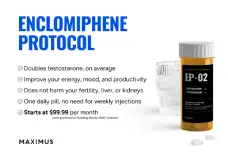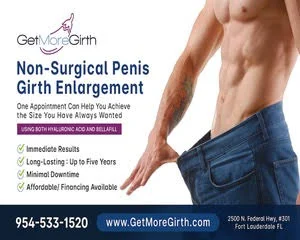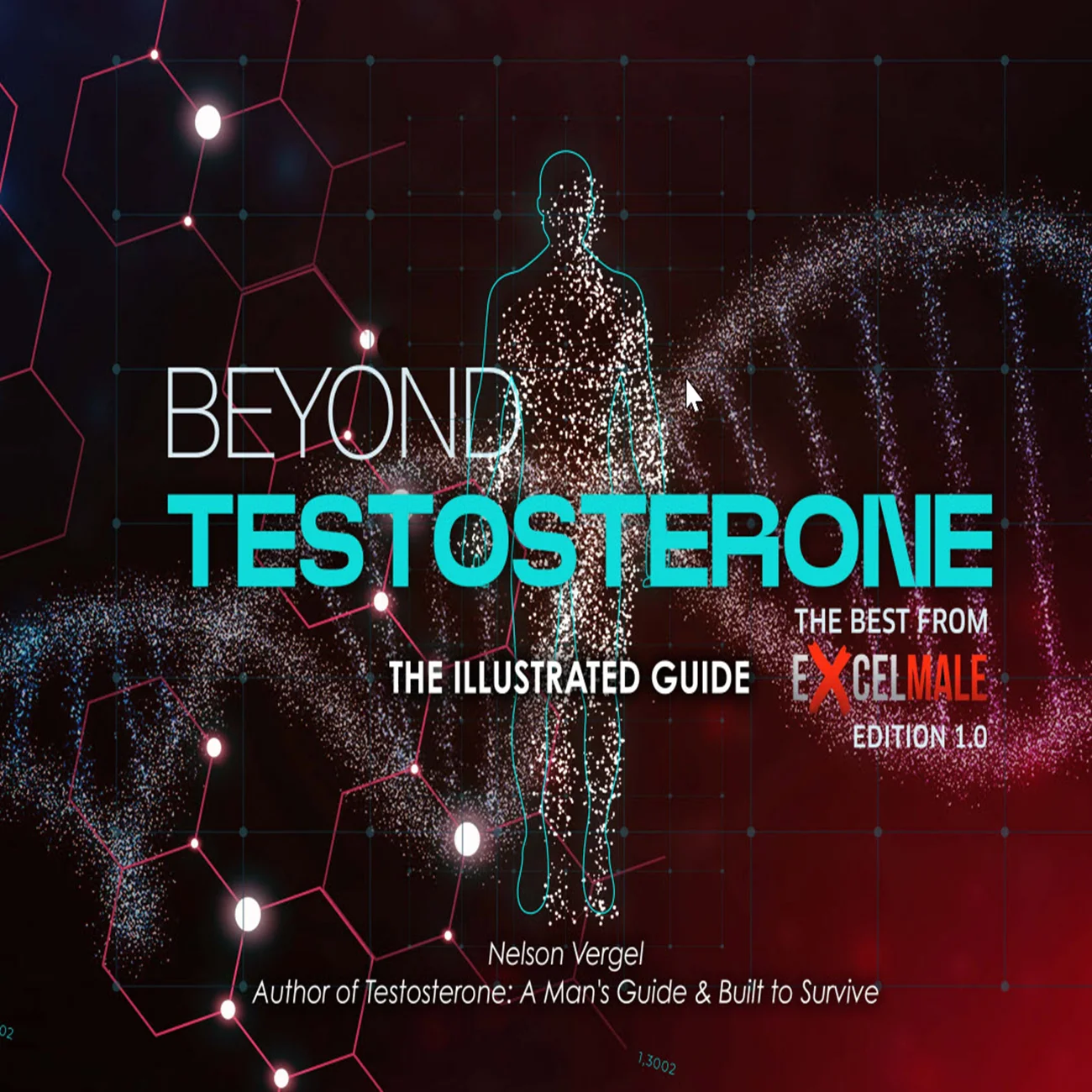You should upgrade or use an alternative browser.
madman
Super Moderator
Hey guys! Most times, after i injected aunq test i realizad it comes some flow back ( some oil get out of my belly), how can i fix it?
What gauge/needle length are you using and what is your T protocol (dose of T/injection frequency)?
My reply from an older thread:
Whether injecting sub-q/IM many may also run into issues with leakage of the oily solution/blood post-injection.
When using a fixed LDS insulin syringe 27-31G injection site leakage of the oily solution let alone blood should be minimal--->non-existent if using a proper injection technique.
Pushing hard on the plunger after injecting can cause the rubber stopper to compress causing a suction/vacuum effect (flow back) which can cause leakage of the oily solution.
Never force the plunger after injecting otherwise you will increase the chance of flow back.
Just inject slow and steady (less trauma) to surrounding tissue.
It is normal to sometimes get some blood leakage (minimal) let alone oily solution after injecting especially if you nicked a vessel on the way in or anytime you pierce the skin.
Avoid pressing hard on the plunger after injecting and it will make a big difference in preventing any flow back (oily solution/blood).
I find piercing the skin quick than injecting slow and steady with minimal pressure from start to finish works best.
I use 25g ( 0.5x25mm) with an insulin needle. My protocol is 20mg test cyp daily. Ive taken your advice and today the flow back was less than other time but there was some.What gauge/needle length are you using and what is your T protocol (dose of T/injection frequency)?
My reply from an older thread:
Whether injecting sub-q/IM many may also run into issues with leakage of the oily solution/blood post-injection.
When using a fixed LDS insulin syringe 27-31G injection site leakage of the oily solution let alone blood should be minimal--->non-existent if using a proper injection technique.
Pushing hard on the plunger after injecting can cause the rubber stopper to compress causing a suction/vacuum effect (flow back) which can cause leakage of the oily solution.
Never force the plunger after injecting otherwise you will increase the chance of flow back.
Just inject slow and steady (less trauma) to surrounding tissue.
It is normal to sometimes get some blood leakage (minimal) let alone oily solution after injecting especially if you nicked a vessel on the way in or anytime you pierce the skin.
Avoid pressing hard on the plunger after injecting and it will make a big difference in preventing any flow back (oily solution/blood).
I find piercing the skin quick than injecting slow and steady with minimal pressure from start to finish works best.
madman
Super Moderator
I use 25g ( 0.5x25mm) with an insulin needle. My protocol is 20mg test cyp daily. Ive taken your advice and today the flow back was less than other time but there was some.
A luer-lock 25G x 1" is not an insulin needle!
1"needle length would be strictly for injecting IM.
Yes it could be used when injecting sub-q as long as you do not push it in too far but a 1/2" (12.7MM) needle length would be the longest needle one would want to use when injecting strictly sub-q!
You need to switch over to an LDS insulin syringe (fixed needle) 27-31G.
Trust me when I tell you if you follow my advice given in post #3 while using an LDS insulin syringe 27-31G flow back of the oily solution will be minimal--->non-existent!
The higher the gauge the smaller the diameter of the shaft/lumen (hollow bore) of the needle which will help minimize any flow back of the oily solution as the size of the puncture into the skin/adipose will be tiny.
An LDS (low dead-space) insulin syringe comes with a fixed/attached needle 27-31G various needle lengths.
Most in the know on TTh are using an LDS insulin syringe whether 1 ml (100 unit), .5 mL (50 unit) or .3mL (30 unit) with fixed needle length (6MM, 8MM, 12.7MM) when injecting strictly sub-q or 12.7MM when injecting shallow IM.
One of the main advantages of using an LDS insulin syringe for testosterone therapy is that there will be minimal waste of medication due to low-dead space let alone you can draw/inject using the same needle (fixed).
Numerous benefits of using an LDS insulin syringe (fixed needle) as injections are virtually pain-free, minimal trauma to the tissue, minimizing any waste of medication, easier for many to measure accurate doses when injecting lower volumes, and you can draw/inject using the same needle to boot.
“Fixed insulin type syringes have no void space at the point where the needle joins the syringe, and so are known as Low Dead Space Syringes, which is sometimes abbreviated in the literature to LDSS. They are made like this so that the full accurate dose is delivered, and there is no waste”
Principles of Testosterone and hCG Injection Technique - Excel Male Health Forum
madman
Super Moderator
I use 25g ( 0.5x25mm) with an insulin needle. My protocol is 20mg test cyp daily. Ive taken your advice and today the flow back was less than other time but there was some.
27G out of stock!
Would just go with the 29G.
Your strength of TC is most likely 200 mg/mL so drawing/injecting .10 mL (10 units) daily should be a breeze!
Draw/inject using the same needle, minimal--->non-existent flowback if you follow the proper injection procedure, minimal trauma to the tissue/pain at the injection site and minimal waste of medication to boot!
LDS insulin syringes (fixed needle) 27-31G is where it's at!
The majority of men on TTh that are in the know are not wasting there time drawing/injecting with those 22-26G needles!

Insulin syringe 1 ml 27G x 8 mm 50 ui box 100 units

THREE PIECE SYRINGE INSULIN 1ML 29G

Insulin syringe 0.5 ml 30G x 8 mm 50 ui box 100 units
hCG Mixing Calculator
HCG Mixing Protocol Calculator
Similar threads
- Replies
- 6
- Views
- 269
- Replies
- 8
- Views
- 609
- Replies
- 2
- Views
- 2K
TRT Hormone Predictor
Predict estradiol, DHT, and free testosterone levels based on total testosterone
⚠️ Medical Disclaimer
This tool provides predictions based on statistical models and should NOT replace professional medical advice. Always consult with your healthcare provider before making any changes to your TRT protocol.
ℹ️ Input Parameters
Predicted Hormone Levels
Enter your total testosterone value to see predictions
Results will appear here after calculation
Understanding Your Hormones
Estradiol (E2)
A form of estrogen produced from testosterone. Important for bone health, mood, and libido. Too high can cause side effects; too low can affect well-being.
DHT
Dihydrotestosterone is a potent androgen derived from testosterone. Affects hair growth, prostate health, and masculinization effects.
Free Testosterone
The biologically active form of testosterone not bound to proteins. Directly available for cellular uptake and biological effects.
Scientific Reference
Lakshman KM, Kaplan B, Travison TG, Basaria S, Knapp PE, Singh AB, LaValley MP, Mazer NA, Bhasin S. The effects of injected testosterone dose and age on the conversion of testosterone to estradiol and dihydrotestosterone in young and older men. J Clin Endocrinol Metab. 2010 Aug;95(8):3955-64.
DOI: 10.1210/jc.2010-0102 | PMID: 20534765 | PMCID: PMC2913038
Online statistics
- Members online
- 3
- Guests online
- 337
- Total visitors
- 340
Latest posts
-
-
Switched from TRT to Enclomiphene...surprising results
- Latest: Guided_by_Voices
-
-
-
-
-












